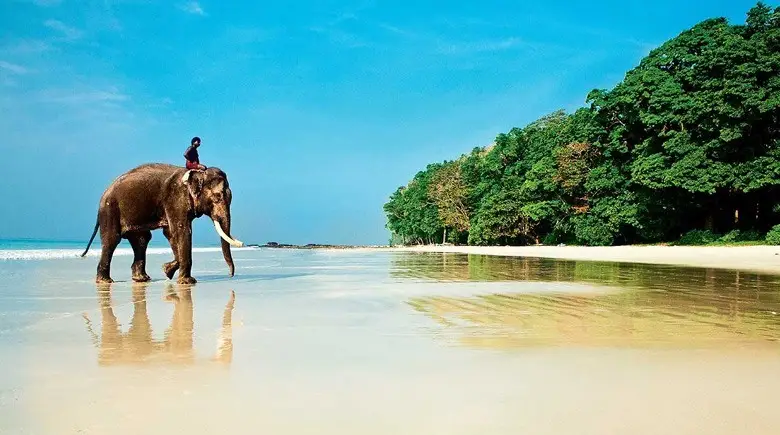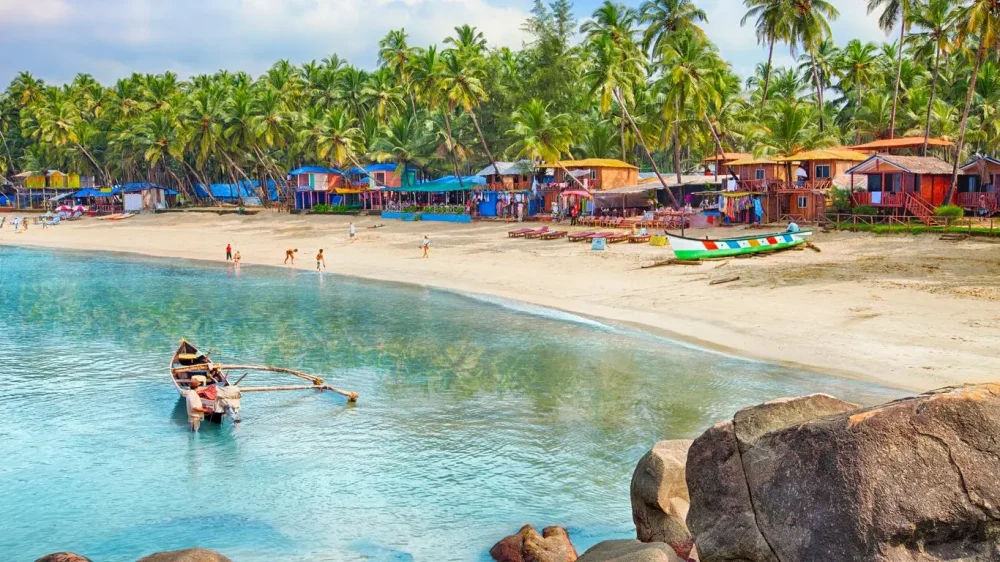How currency exchange scams work in India is a question that interests thousands of tourists. Unfortunately, this is a daily practice embedded in the street rhythm of the country, where every traffic light signal is accompanied by an offer of the “best rate.” Converting rupees turns into a test of attentiveness, where one wrong move means a hit to the budget, and trust evaporates faster than small bills in the nimble hands of local “financial experts.”
There is an active scheme with counterfeit rupees on the streets. Externally, the banknotes do not differ in any way: standard print, watermark, even a textile thread. The exposure happens in the store when the cashier refuses to accept the banknote. Counterfeits often end up in hand exchanges, especially at night.

Scammers work in pairs. One distracts, the other counts the bills. The scheme is simple – include 2-3 counterfeits among the real ones in the stack. The tourist checks the top 2-3, trusts the rest. Fraud in the currency exchange sector in India is a well-known duo, even to the police, but there is virtually no punishment.
No bright signs, just a smile, quick hands, and a rate that generously exceeds the official one. The seller confidently quotes 90 rupees for a dollar, while the official rate is 83.15. The trick works instantly. The currency exchange is completed, but there are fewer rupees in the bundle: 7200 instead of the rightful 9000. The excuse – “a mistake in counting,” but no receipt, no cameras.
In major tourist cities – Goa, Varanasi, Agra – a similar scenario is encountered. Fraud takes on “friendly” forms: the seller introduces themselves, talks about family, offers tea, then invites to exchange currency “without commission.” Such an operation turns into a spectacle with a pre-written ending.
The unnoticed deception in currency exchange in India often starts with small things: inflated rates or mental calculations. For example – exchanging 200 dollars for 1000 rupees above the rate. Upon careful analysis, it is revealed that the rupees were calculated at a rate of 1:75 instead of 1:83. The difference disappears in the palm of the worker. The absence of a receipt eliminates any claims.
Psychological pressure is often used: haste, queues, pushing from behind. The tourist loses control, agrees to the terms without checking each bill. These tricks are aimed at one thing – reducing attentiveness. The street is noisy, the traffic is loud, a foreign country – and suddenly a mistake becomes costly.
How currency exchange scams work in India is illustrated by the scenario with a “personal recommender.” In tourist areas, the phrase “Don’t go to the bank, I’ll help” is often heard. An approach like “Need an exchange? I know someone, doesn’t cheat” leads to an inconspicuous shop. The bills go into the hands, the worker distracts with conversation, returns an incomplete sum. The tourist notices the error 200 meters away. Returning is futile.
The problem arises later when trying to use the rupees. Stores refuse, citing counterfeits. The black market deals with dollars, euros, sometimes even Thai baht.
The lack of a document for the transaction closes the path to a refund. Damage ranges from 500 to 5000 rupees per transaction. The currency disappears, trust does too.
Scams in India actively exploit trust. Especially among tourists who find themselves in the country for the first time. Similar schemes are prevalent near train stations, tourist attractions, and budget hotels. The goal is to create an illusion of care, seasoned with “personal” rates. In reality – a trap with no way out.
Fraud actively uses cognitive distortions. The tourist arrives tired, overloaded with information, with a suitcase in one hand and bills in the other. The exchange worker speaks quickly, in accented English. During the counting, chaos is created – the phone rings, someone knocks on the door, a client enters.
Typical tactics: giving an incomplete sum followed by accusations of greed. Pressure is created. The person leaves, avoiding conflicts. It is in such conditions that schemes of naive trust flourish.
How currency exchange scams work in India are vividly illustrated by the situations listed below. Avoiding them is the key to safeguarding your budget.
Practical tips:
Each of these points reduces the likelihood of falling victim to scams during currency exchange in India.
In popular cities, the difference between the official and “tourist” rate can reach 12%. When exchanging 500 euros, losses can amount to up to 60 euros – equivalent to a two-day stay in an average hotel.
The counting works against the tourist: instead of 45,000 rupees, they receive 39,500, citing a “commission.” No one specifies its size. Such traps turn currency operations into a financial minefield.
Eliminating risks requires a systematic approach, not heroism. Planning a route considering verified exchange points reduces the chances of encountering scammers. Increased vigilance is not paranoia but an adaptive mechanism in exotic environments.

Common mistakes occur right after arrival. Haste is fertile ground for losses. It is better to use minimal amounts at the airport and conduct major transactions at authorized points in the city center.
How currency exchange scams work in India is not an isolated incident but a persistent scheme. Promises of a favorable rate often conceal traps. Financial transactions require attentiveness and calculation. Clear understanding of risks, basic measures, and refraining from spontaneous decisions help avoid losses and maintain a positive travel experience.

India’s tourist geography encompasses coastal zones, mountain ranges, cultural valleys, desert oases and forest plateaus. India’s resorts are not limited to beaches alone. They form a mosaic picture where each region reveals its own climate, rhythm and holiday rituals. Ayurvedic practices, ocean walks, meditation retreats and trekking routes in the Himalayas are equally in demand …

Travelling to the district reveals to tourists a completely different face of India – tranquil, peaceful and immersed in nature. It hides pristine beaches, ancient temples, ayurvedic centres and protected corners where time seems to slow down. Holidays in South Goa are the choice of those who are looking for something interesting and unusual to …